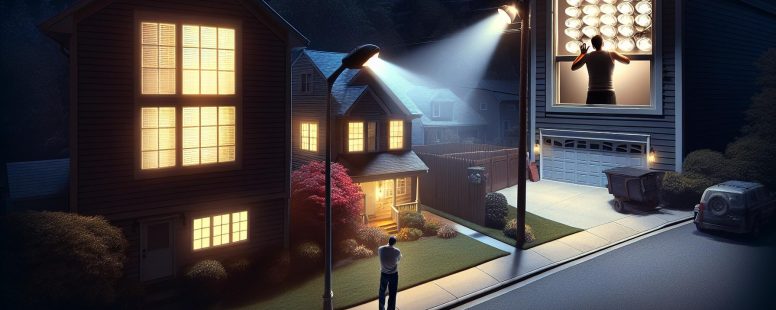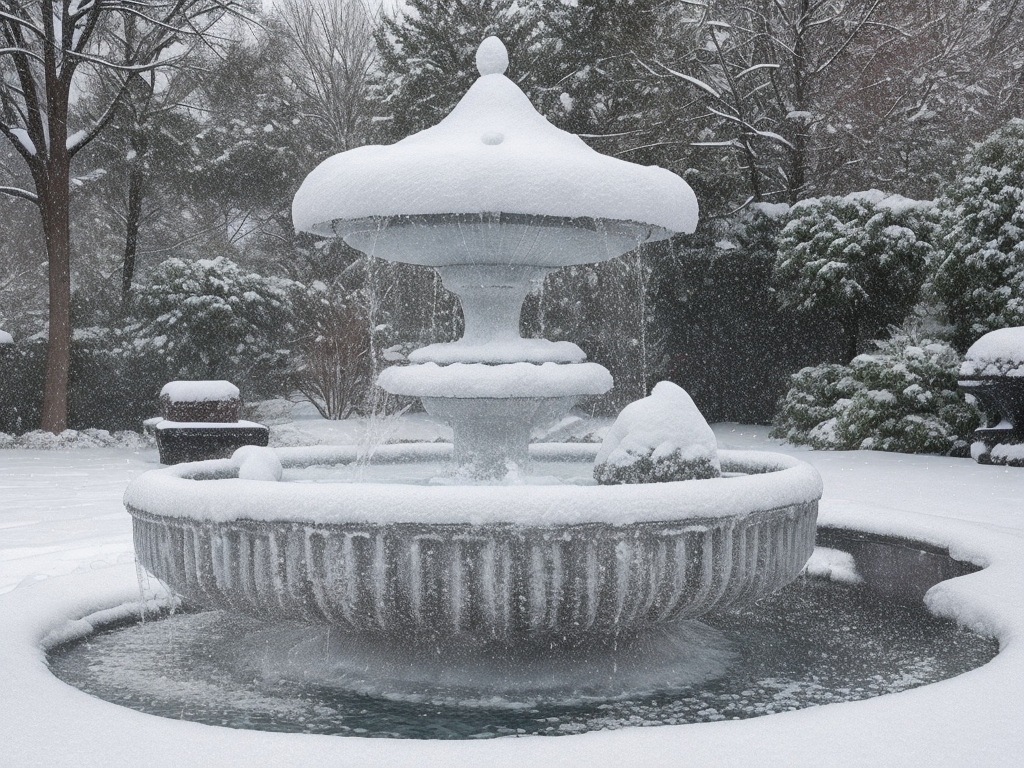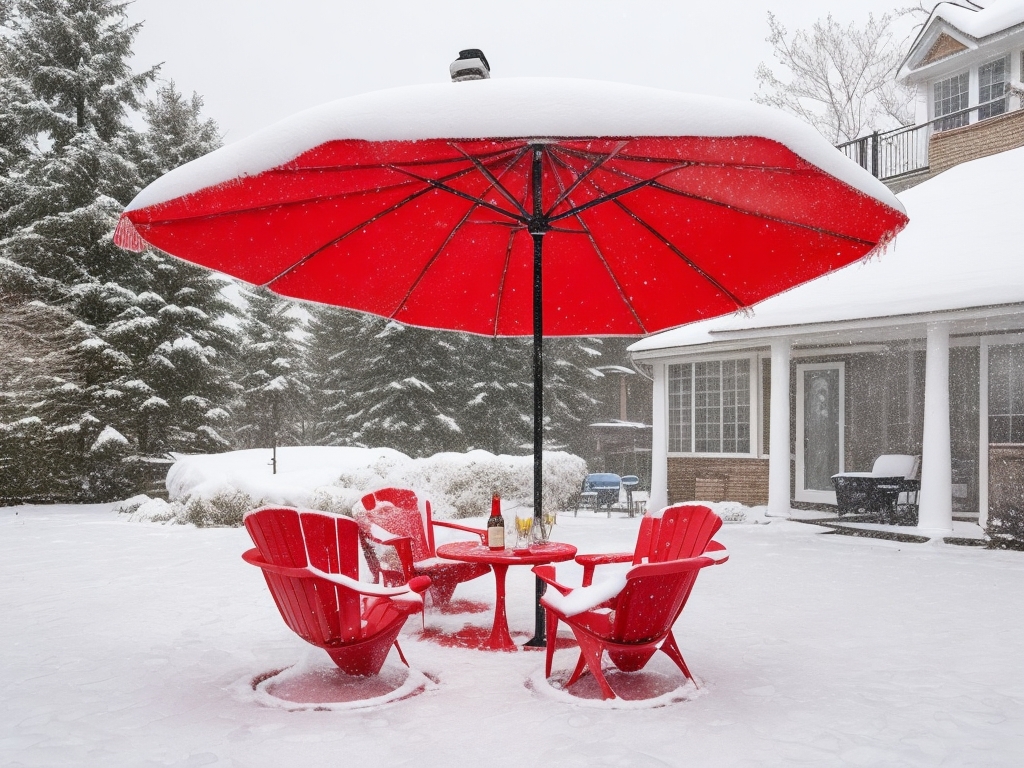Dealing with Bright Neighbor Lights: Your Guide to Peaceful Nights
Ever found yourself tossing and turning in bed, unable to catch some much-needed shut-eye because your neighbor’s lights are just too bright? You’re not alone. This is a common complaint among city dwellers and suburbanites alike.
Understanding the Issue: Neighbors Lights Too Bright
Bright lights shining from a neighbor’s house might not seem like a big deal initially. But, excessive brightness can lead to several problems and disturbances.
Dangers and Disturbances Caused by Overly Bright Lights
Overexposure to bright lights during night hours carries potential risks that you must consider:
- Sleep Disruptions: Bright light streaming into your bedroom window may interfere with your sleep cycle. Exposure to such artificial light disrupts melatonin production in humans — an essential hormone regulating our sleep-wake pattern.
- Health Risks: Persistent exposure leads to health issues over time, increasing the risk of conditions like insomnia or even heart disease.
- Safety Hazards: Glaring outdoor lighting often blinds drivers momentarily as they pass by houses with overly-bright exterior illumination, posing serious safety threats on roadways nearby.
In essence, while ensuring adequate home security is crucial through well-lit surroundings at night; but when this becomes too much it could turn problematic for neighbors around us leading them towards harmful consequences indirectly linked back here!
Legality and Rights Relating to Bright Lights
Exploring the legal world around overly bright lights can feel complex. But don’t worry, we’re here to guide you through it.
Ordinances and Codes: Local Laws on Outdoor Lighting
Local laws governing outdoor lighting vary widely across different municipalities. These regulations often fall under ‘nuisance’ ordinances that prohibit disturbances such as noise, smells, or in our case – excessive light.
For example, Palo Alto’s municipal code (Chapter 18.52) clearly stipulates limits for exterior lighting fixtures concerning their intensity and direction of illumination – a key measure against intrusive brightness into neighboring properties.
Similarly in Boulder County Colorado, an ordinance mandates dark-sky compliant fixtures for all external lights so they do not project above horizontal plane level ensuring minimal glare spillage onto adjacent homes.
To know what applies specifically in your area:
- Consult local city or county websites
- Check if any specific guidelines exist about residential outdoor lighting
- Review homeowners association rules (if applicable)
Remember though; these resources are just starting points! Consulting with a local attorney could provide more comprehensive advice tailored to your situation.
Your Rights as a Homeowner or Tenant
In instances where glaring neighborly lights become disruptive sleep-stealers rather than benign beacons of security; understanding one’s rights is crucial!
As both homeowner or tenant:
- You hold reasonable expectation towards peaceful enjoyment within rented premises without substantial interference from external sources including invasive light pollution.
2. It’s plausible invoking ‘quiet enjoyment’ clauses present typically within lease agreements when confronted by relentless night-time luminosity invading personal space disrupting peace at home.
3. Remedies might involve seeking injunctions via courts ordering offending neighbors restrict obtrusive floodlights providing much needed respite from unwanted radiance!
4. In cases involving tenants affected by another apartment unit’s egregious brightness contact property management initially outlining concerns preferably written form so leaving a paper trail.
Of course, before any legal actions it’s always beneficial initiating an open dialogue with the neighbor explaining impact of their lights on your living conditions. Often times they might be unaware and happy to adjust light direction or intensity for maintaining neighborhood harmony.
Evaluating Your Own Environment
Transitioning from understanding the implications of excessively bright lights, it’s crucial to take a look at your own environment. This section focuses on how you can assess your exterior lighting and comprehend how light differences impact various areas.
Assessing Your Exterior Lighting: Neighbors’ Concerns
As part of this self-evaluation process, start by assessing your current outdoor illumination setup. It entails reviewing not just brightness levels but also angles and placements that may inadvertently cause discomfort for neighbors.
For instance:
- Observe whether any fixtures shine directly into neighboring homes or yards.
- Check if the intensity is too high compared to surrounding residences.
3.Valuate other elements like color temperature – warmer hues (around 3000 Kelvin) are often less intrusive than colder ones (above 5000 Kelvin).
4.Determine whether motion sensor activated lights trigger unnecessarily frequently.
In essence, creating an illuminative balance maintains safety without causing annoyance should be sought after.
The Impact of Light Differences: Urban vs Rural Areas
Understanding context remains vital in addressing excessive lighting concerns – particularly with respect to urban versus rural settings.
Urban environments generally possess more ambient light due to denser population distribution, commercial establishments, streetlights etcetera – making additional intense residential lighting potentially redundant or overbearing.
On contrast,
Rural locales typically have lesser overall luminosity owing largely natural darkness preserved under ‘dark sky policies’. Herein extra strong home security lighting might stand out aggressively disturbing tranquil nightscapes shared collectively by inhabitants within such regions
Tackling the Issue Diplomatically
Resolving an issue such as bright lights from your neighbor’s property can be a delicate process. It involves clear communication, understanding legal rights and roles of various parties involved like homeowners associations.
Opening a Dialogue: Discussing Light Pollution with Your Neighbor
Firstly, consider opening a dialogue about light pollution with your neighbor. After all, they might not even realize that their lighting is causing discomfort or disturbances. Choose an appropriate time to discuss this issue; it’s best not to confront them when emotions are high if you’ve just had another sleepless night due to their glaring security lamp!
When approaching them:
- Be respectful: Ensure you express yourself politely and calmly.
- Stay factual: Explain precisely how their lights affect you—for example, by disrupting sleep patterns or reducing visibility on roadways near home.
3.Provide suggestions: Offer some practical solutions that won’t compromise their need for security but will alleviate the brightness—perhaps recommending lower wattage bulbs or motion-sensor options could help.
Remember, maintaining positive relationships in your neighborhood benefits everyone long-term!
The Role of Homeowner Associations in Resolving Disputes
Should direct conversation fail to bring desired changes—or perhaps isn’t feasible because there’s no personal rapport—homeowners associations (HOAs) often play significant roles in resolving disputes among neighbors over issues including excessive outdoor lighting.
HOAs usually have regulations about exterior illumination within community properties which members must adhere:
- Review guidelines provided by HOA concerning external lighting usage
- Consult HOA board if these rules aren’t being respected
While specific procedures may vary depending upon individual association governance structure & rules generally involve filing formal complaints followed by mediation processes between affected parties before proceeding towards more stringent measures (like penalties).
Utilizing diplomatic strategies while dealing with overly bright neighbor lights helps ensure harmonious living conditions remain intact amongst residents without compromising safety aspects associated crucially with exterior home illumination.
Technological Solutions to Bright Lights Issue
Following the exploration of problems related to overly bright lights and potential diplomatic solutions, it’s time now for a closer look at some technological answers. This section focuses on both outdoor light filtering options and advanced lighting technologies that can help control excessive brightness.
Outdoor Light Filtering Solutions
Outdoor light filtering solutions are your first line of defense against intrusive exterior illumination. These range from window treatments like blackout curtains or shades, designed specifically to block out unwanted light while maintaining indoor aesthetics.
Blackout curtains, with their specially woven fabric layers, eliminate up-to 99% of incoming light when closed fully. They also serve dual functions by providing thermal insulation as well—ideal if you’re seeking energy efficiency alongside improved sleep quality.
Shades offer another solution with roller styles often available in room-darkening versions blocking majority of external lumination. Unlike traditional blinds or shutters which allow slivers of brightness through gaps between vanes or louvers; these alternatives provide an almost impenetrable barrier against night-time glare without sacrificing daytime natural sunlight exposure when retracted completely.
Consider installing anti-glare window films too – thin adhesive sheets applied directly onto glass panes reducing glaring effect caused by strong outdoor beams directed towards homes whilst still allowing sufficient daylight during day hours due its semi-transparent nature.
Advanced Lighting Technologies for Light Control
Progressing into more technologically advanced territory involves exploring different types innovative illuminating systems able manage levels efficiently yet effectively enough not disrupt neighbors’ comfortability unnecessarily:
- Motion sensor lights: These units only turn on upon detecting movement within certain radius thereby limiting unnecessary continuous operation throughout evening until dawn saving electricity costs simultaneously avoiding bothering nearby households unduly.
- Dimmable LED bulbs: Adjusting intensity according personal requirements becomes feasible using such devices affording flexibility depending current situation whether requiring less ambient mood setting romantic dinner date instance brighter setup undertaking home improvement tasks necessitating greater visibility aspect otherwise challenging low lit conditions.
- Smart lighting systems: These setups offer unprecedented control over illumination aspects. Controlled via smartphone apps, these systems allow adjustment of brightness levels and even color temperatures to suit varying needs or moods without affecting the outdoor ambiance adversely for others in vicinity.
When to Seek Legal Assistance
Even with the best intentions and effort, discussions might not always resolve issues about excessively bright lights from your neighbor’s property. In these instances, you may find it necessary to seek legal assistance.
Reporting Violations: When and Why
It’s time to consider reporting violations when amicable conversations fail or if neighbors persist in ignoring lighting regulations even though repeated requests for change. Depending on local ordinances, excessive light can be a form of environmental pollution known as ‘light trespass’. Local municipalities usually have nuisance laws that address such disturbances; remember Palo Alto’s limits on exterior lighting intensity? You are entitled to peaceful enjoyment of your living space without having this tranquility disrupted by intrusive light.
So why report? Firstly, filing an official complaint creates a record of the issue which could prove crucial should further action become necessary down the line. Secondly, it alerts relevant authorities who then bear responsibility for addressing the problem either through fines or enforcement actions against offending parties.
Exploring The Legal Path: Lawsuits And More
If continuous attempts at resolution remain unsuccessful and reports go unaddressed by authorities due willful non-compliance from violating parties or ineffective law enforcement measures – lawsuits come into play as an available option under extreme circumstances. Typically seen as last resorts because they require considerable resources (time & money), seeking court injunctions can lead offending neighbors being legally required reduce their disruptive outdoor illumination.
While daunting thought initially given associated costs involved pursuing litigation path – sometimes no other options exist ensure peace returns your home environment after numerous failed diplomatic strategies technical solutions remedies offered this article aren’t able mitigate overly intense exterior residential lighting invading personal spaces causing sleep disruptions potential health hazards resulting heart disease insomnia possible safety concerns drivers blinded glares emitted security fixtures public roadways particularly important rental situations where tenants rights infringed upon landlords unwilling take corrective steps even though valid complaints lodged them invoking help housing courts successfully sought rent reductions based detrimental effects quality life due persistent light pollution.
Conclusion
So, you’ve taken a deep jump into the world of overly bright neighbor lights. You now know how these glaring nuisances can affect your sleep and overall health. But it’s not all doom and gloom! Remember, constructive conversation with neighbors or engaging property management is often an effective first step towards resolution.
You’re equipped to evaluate outdoor lighting setups too – keeping in mind brightness levels, fixture placements, color temperature while considering urban versus rural living environments’ unique needs.
Don’t forget about handy tech solutions like blackout curtains or shades for immediate relief from unwanted light invasion. Motion sensor lights and smart lighting systems offer efficient ways to manage exterior illumination without annoying others around you.
And if things get tough? Your understanding of local laws concerning nuisance ordinances could come in handy when exploring potential legal routes.
While managing bothersome neighborhood lights might seem daunting at first glance, armed with this knowledge we trust you’ll be able to restore harmony on your street soon enough.
- Decorating Your Backyard with Homemade Birdhouses: Creative Ideas to Attract Birds & Beautify Your Garden - October 3, 2025
- Creating Stepping Stones with Kids: A Fun Backyard Project for Family Bonding and Creativity - October 3, 2025
- Where Can I Sell Pottery Locally? Best Places and Tips for Selling Handmade Ceramics - October 3, 2025




